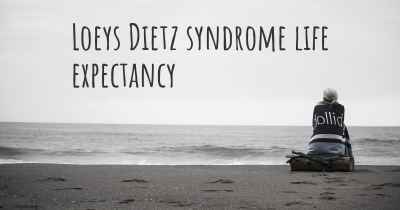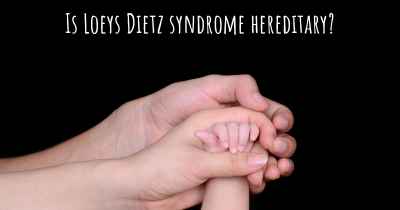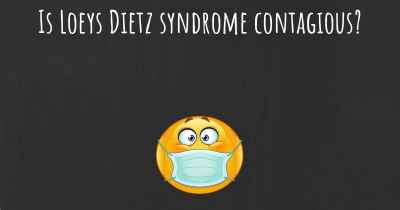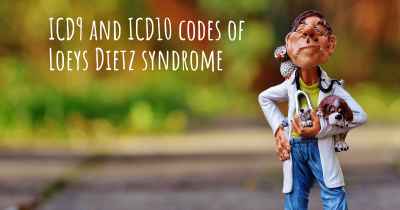17
What is the history of Loeys Dietz syndrome?
When was Loeys Dietz syndrome discovered? What is the story of this discovery? Was it coincidence or not?

First described in 2005 as its own collective tissue disorder. Since then, 5 types have been identified, the latter Type 5 described in 2014.
Posted May 12, 2019 by Derek 4050
Loeys–Dietz syndrome (LDS) is an autosomal dominant genetic connective tissue disorder. It has features similar to Marfan syndrome and Ehlers–Danlos syndrome.[2][3][4] The disorder is marked by aneurysms in the aorta, often in children, and the aorta may also undergo sudden dissection in the weakened layers of the wall of the aorta. Aneurysms and dissections also can occur in arteries other than the aorta. Because aneurysms in children tend to rupture early, children are at greater risk for dying if the syndrome is not identified. Surgery to repair aortic aneurysms is essential for treatment.
Loeys–Dietz syndrome
Other names
Aortic aneurysm syndrome due to TGF-beta receptors anomalies
Autosomal dominant - en.svg
This condition is inherited in an autosomal dominant manner[1]
Specialty
Cardiology, Rheumatology, Medical genetics Edit this on Wikidata
There are five types of the syndrome, labelled types I through V, which are distinguished by their genetic cause. Type 1, Type 2, Type 3, Type 4 and Type 5 are caused by mutations in TGFBR1, TGFBR2, SMAD3, TGFB2, and TGFB3 respectively. These five genes encoding transforming growth factors play a role in cell signaling that promotes growth and development of the body's tissues. Mutations of these genes cause production of proteins without function. The skin cells for individuals with Loeys–Dietz syndrome are not able to produce collagen, the protein that allows skin cells to be strong and elastic. This causes these individuals to be susceptible to different tears in the skin such as hernias. Although the disorder has an autosomal pattern of inheritance, this disorder results from a new gene mutation in 75% of cases and occurs in people with no history of the disorder in their family. In other cases it is inherited from one affected parent.[citation needed]
Loeys–Dietz syndrome was identified and characterized by pediatric geneticists Bart Loeys and Harry "Hal" Dietz at Johns Hopkins University in 2005.
Loeys–Dietz syndrome
Other names
Aortic aneurysm syndrome due to TGF-beta receptors anomalies
Autosomal dominant - en.svg
This condition is inherited in an autosomal dominant manner[1]
Specialty
Cardiology, Rheumatology, Medical genetics Edit this on Wikidata
There are five types of the syndrome, labelled types I through V, which are distinguished by their genetic cause. Type 1, Type 2, Type 3, Type 4 and Type 5 are caused by mutations in TGFBR1, TGFBR2, SMAD3, TGFB2, and TGFB3 respectively. These five genes encoding transforming growth factors play a role in cell signaling that promotes growth and development of the body's tissues. Mutations of these genes cause production of proteins without function. The skin cells for individuals with Loeys–Dietz syndrome are not able to produce collagen, the protein that allows skin cells to be strong and elastic. This causes these individuals to be susceptible to different tears in the skin such as hernias. Although the disorder has an autosomal pattern of inheritance, this disorder results from a new gene mutation in 75% of cases and occurs in people with no history of the disorder in their family. In other cases it is inherited from one affected parent.[citation needed]
Loeys–Dietz syndrome was identified and characterized by pediatric geneticists Bart Loeys and Harry "Hal" Dietz at Johns Hopkins University in 2005.
Posted May 14, 2019 by Glenn 2500
It has a short history. It was identified in 2005 by Dr Loeys and Dr Dietz. They realized they had patients who were identified as Marfans Syndrome but that didn’t fit so found the mutation responsible
Posted May 16, 2019 by Vicki 1800








